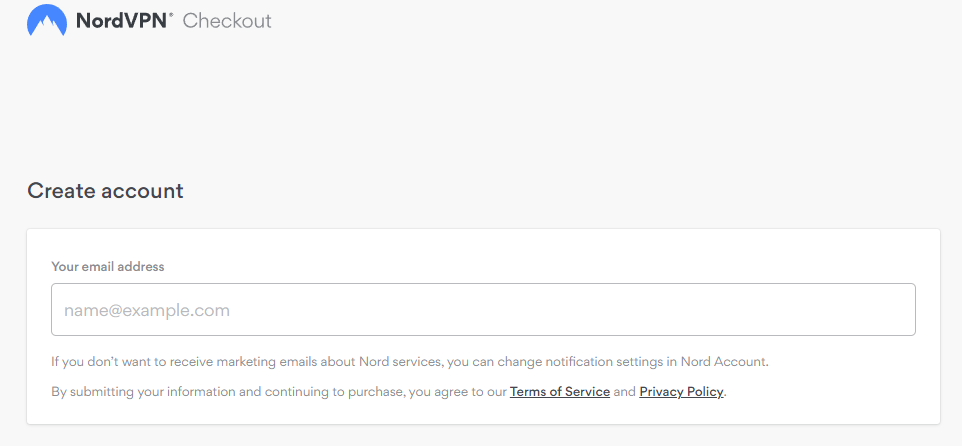Did you decide to purchase NordVPN? Do you wonder: How To Install NordVPN On Kodi Raspberry Pi?
In this article we will show you step by step how to make a purchase of new NordVPN subscription, set up account and start using NordVPN software! After guide we will answer some questions regarding using an VPN app.
Table of Contents
Here is how to purchase a NordVPN subscription
- Start by visiting NordVPN website, you can click here.
- Click on pricing tab at the top of the page, here you can see current plans, pricing and deals. Choose which NordVPN plan you prefer to purchase and then click “Get *name of the plan* button.
Click here to get -65% NordVPN Deal!
You can choose between standard plan (pure NordVPN service) or other plans that comes with NordPass or NordLocker services.
- Now you have to type your email adress that you will be using NordVPN with.

- Now you have to choose payment method which you want to use, and proceed with it.
- Well done! If you followed this guide nicely you purchased NordVPN subscription! Look at your email inbox, here you will find purchase confirmation email.
Now download NordVPN APP and start using it
After purchasing your VPN plan, head to this page to download the NordVPN app
Now you can click start and enjoy using VPN!
Click here to get -65% NordVPN Deal!
Let’s get back to answering your questions:
First, you’ll need to sign up for a NordVPN account. You can do this on their website or through one of their apps. Once you have an account, download the NordVPN app for Linux from their website.
Once the app is downloaded, open it and log in with your NordVPN credentials. After that, select a server location from the list and click the “Connect” button. That’s it! You’re now connected to the internet through a secure VPN tunnel.
Worth knowing
To do this, we will need to install OpenVPN onto our Raspberry Pi. You can find more information on how to do this here: https://openvpn.net/community-resources/installing-openvpn/. Once installed, we will also need to generate some keys and configuration files. Again, more information on how to do this can be found at the link above.
Once we have everything set up, we will need to configure our router to forward traffic from our LAN (Local Area Network) out through the VPN. This will allow us to encrypt all traffic that leaves our network and tunnel it through the VPN back to our home server. The guide linked below outlines how to do this using DD-WRT: https://www.techjunkie.com/dd-wrt-openvpn/. Be sure to select the correct firmware version for your router!
And that’s it! You should now have a working VPN router that will encrypt all traffic leaving your LAN. Have fun and stay safe!
Worth knowing
Here’s a breakdown of how a VPN works: your device (computer, phone, etc.) connects to a VPN server which then encrypts all of your traffic before sending it out onto the internet. This encrypted traffic is much more difficult for hackers to intercept and read. That way, even if someone is able to eavesdrop on your connection, they won’t be able to see what you’re doing or where you’re going online.
A Raspberry Pi can make an excellent VPN server due to its low power consumption and small footprint. Plus, setting up a Raspberry PiVPN server is relatively easy and inexpensive. But just because it’s easy does not mean it’s not secure. In fact, when configured properly, a Raspberry Pi VPN server can be just as secure as any other type of VPN server.
One thing to keep in mind is that you’ll need to choose a reputable and trustworthy VPN service provider in order to get the most security possible. Also, be sure to follow all best practices for securing your Raspberry Pi such as changing default passwords and keeping your software up-to-date.
Worth knowing
The answer to this question is a bit complicated. On one hand, there are some great free Raspberry Pi VPNs out there that can provide you with all the online privacy and security you need. However, on the other hand, most free Raspberry Pi VPNs come with their fair share of limitations.
If you’re looking for a truly free and unrestricted Raspberry Pi VPN experience, then your best bet is to sign up for a paid service. Yes, you’ll have to shell out a few bucks each month, but it’ll be worth it in the long run if you value your online privacy and security.
